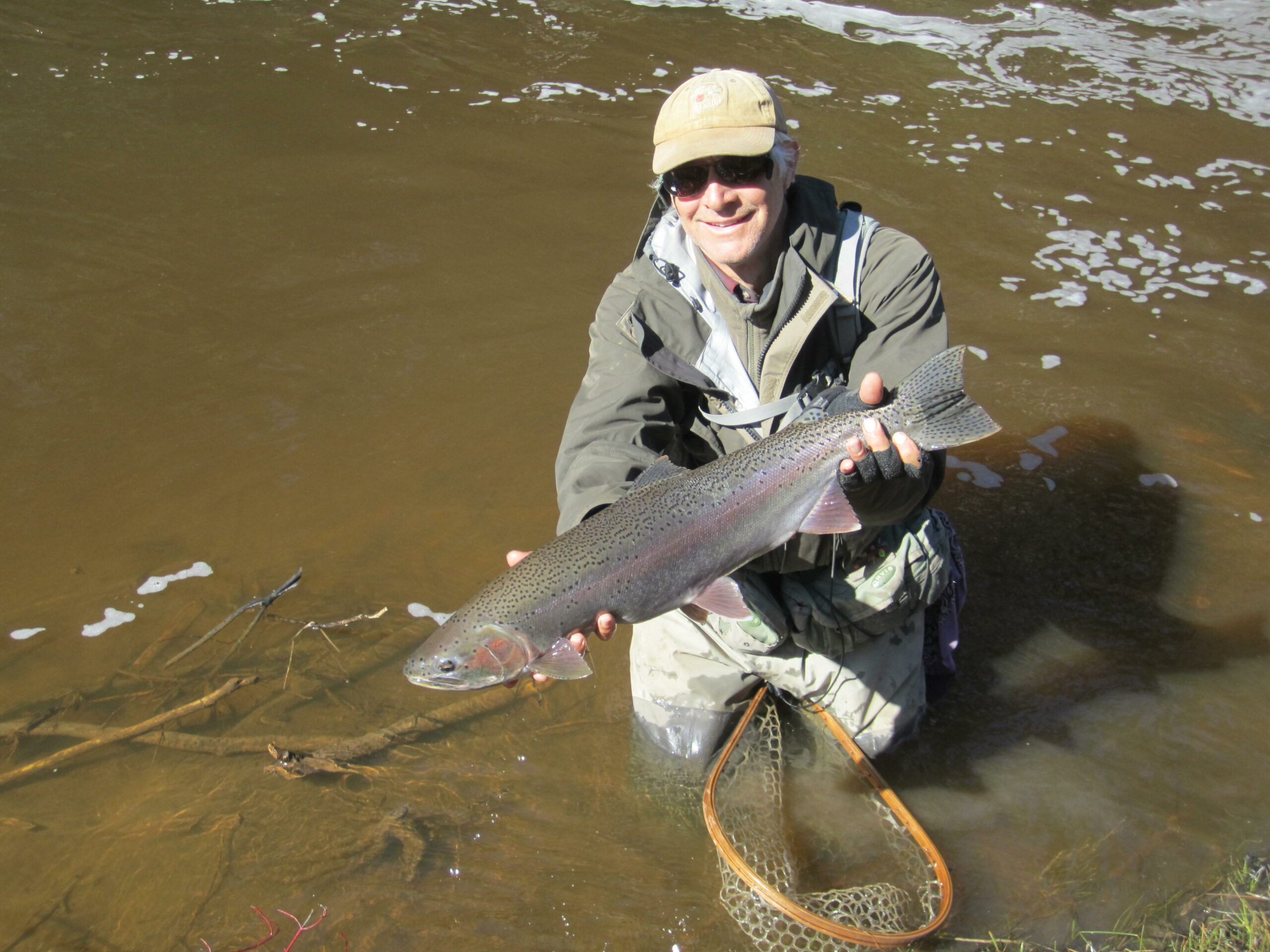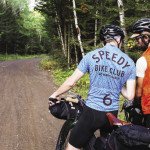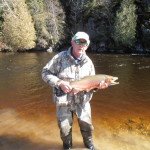Scott Thorpe used to be a successful architect. He was well compensated for his endeavors, but he didn’t like the work.
“It’s so stressful and competitive,” he says. “Everyone is so critical of your work that you never feel good about yourself.”
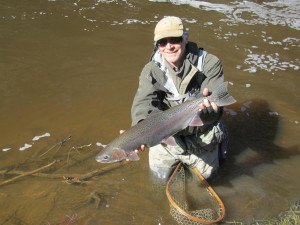
Thorpe eventually came to a career crossroads. Unless you own the firm, at a certain age an architect becomes expensive and expendable. In other words, an older architect may be put out to pasture. To avoid that fate, Thorpe decided to take another path.
“I thought I’d try something that I’m good at—fishing,” he says. “This wasn’t a midlife crisis; I’d already been through that. I just wanted to do something I enjoy.”
So a decade ago, while in his mid-50s, he became a fly-fishing guide. In some ways, it was an easy transition, because he was already a rabid trout angler. At the time he landed over 150 steelhead each year from Wisconsin’s Bois Brule River and the rivers of the North Shore. He has the distinction of holding the Minnesota rainbow trout state record with 16-pound, 6-ounce steelhead caught in the Devil Track River near Grand Marais on April 28, 1980.
He knew how to catch fish, which is the first step to becoming a guide. The second step is to put down your fishing rod and help someone else catch a fish. He discovered he enjoyed doing that, too.
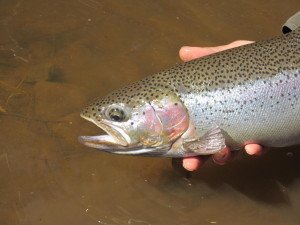
“When you’re a guide, you have to get fishing out of your system and instead fish vicariously through others,” he says.
He derives “warm and fuzzy” satisfaction out of guiding a client to a steelhead that may well be the largest fish they’ve ever caught. The clients are very appreciative of his efforts, something Thorpe says was lacking when he worked as an architect.
“And you get tips from satisfied clients,” he says. “That’s another kind of warm and fuzzy.”
Guiding allows Thorpe to spend time in the places he loves. His work begins in early April when the spring steelhead season opens on the Bois Brule.
“I haven’t missed a Brule opener in 46 years,” he says. “I think that’s a record.”
After two or three weeks on the Brule, he heads to Minnesota’s North Shore. Living in his Airstream trailer, he headquarters first at Tettegouche State Park near Silver Bay. As spring progresses, he moves north, parking his trailer on my property while he fishes the upper shore rivers. When the steelhead run is over, he returns to his home in South Minneapolis, where he guides on the driftless area trout streams of Minnesota and Wisconsin until mid-June. Then he heads north to Alaska.
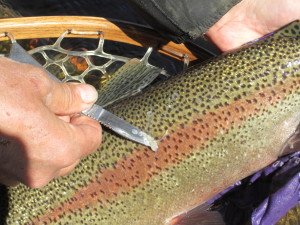
Thorpe spends his summers at Talaheim Lodge, a luxury heli-fishing camp on the Talachulitna River in west-central Alaska, west of Cook Inlet. Via helicopter, he takes clients from around the world fly-fishing on remote wilderness streams for Pacific salmon and rainbow trout. He says it’s the kind of place where a guide’s head is constantly swiveling from side to side in order avoid a surprise approach by a brown bear. And the fishing is fantastic.
This year will be his ninth season in Alaska and he plans to continue guiding there for another two years. Then he wants to try something different. He’ll continue guiding in Minnesota and Wisconsin, perhaps adding something new, like fly-fishing for muskies, to the mix. He may spend part of the year at an exotic locale. He says guiding in other countries such as Canada and Argentina has become more difficult due to work restrictions on nonresidents.
Thorpe leads an enviable angling lifestyle and is happily married, which some would say is doubly enviable. His wife, Maria Manion, shares his passion for angling and often goes fishing with him. She is a board member of the Kiap-Tu-Wish Chapter of Trout Unlimited. The couple doesn’t have children, but they are presently raising a young black Lab. In the fall, after the steelhead season has ended on the Bois Brule, Thorpe and Manion are ardent duck hunters.
When he has time off and wants to relax, Thorpe (not surprisingly) goes fishing. I joined him recently for a day on the river. Although we’ve known each other for decades, primarily from innumerable encounters on trout streams, it was the first time we’d fished together. Our fishing styles meshed well and we leap-frogged up the river, catching a fish or two, and enjoying conversation. Like me, Thorpe has fished on the North Shore since boyhood. His father used to bring him and his brother David up to the Shore from their home in the Twin Cities every weekend while the run was on.

“We used to get to the Split Rock River about one in the afternoon on Saturday,” he told me. “All of the guys would be sitting on the bank or taking it easy because they’d been on the river since daybreak. My brother and I would step into the water and start catching fish. Everyone would say a new run had just come in, but really, the fish had been there. It was just that my brother and I were starting fresh and were excited to fish.”
Over the years, his fishing enthusiasm hasn’t waned. On the day we were out, he collected scale samples from the fish we caught for a Minnesota DNR research project, grumbling because the researchers had been skeptical that he needed as many envelopes as he asked for to hold the individual samples and that he had to scrounge more envelopes from a creel census clerk. He had already collected more than 50 samples.
When asked what he’d learned during a decade of guiding, he said fishing is a leveler that brings together people of different backgrounds, levels of education or incomes. Most people are happy when they are fishing. He has guided captains of industry who were humbled to learn that they hadn’t acquired the skills needed to simply catch a fish.
“You may have devoted your life to being a good money-maker, but if you can’t make the cast, you can’t buy your way out of that,” he says.
In those situations, he never hooks a fish and lets the client reel it in. Instead he finds a way to position the client so they can catch a fish on their own. And when they do he earns a special reward.
“Most people say, ‘Thank you. I couldn’t have done that without you,’” he says. “I never tire of hearing of hearing them say that.”


